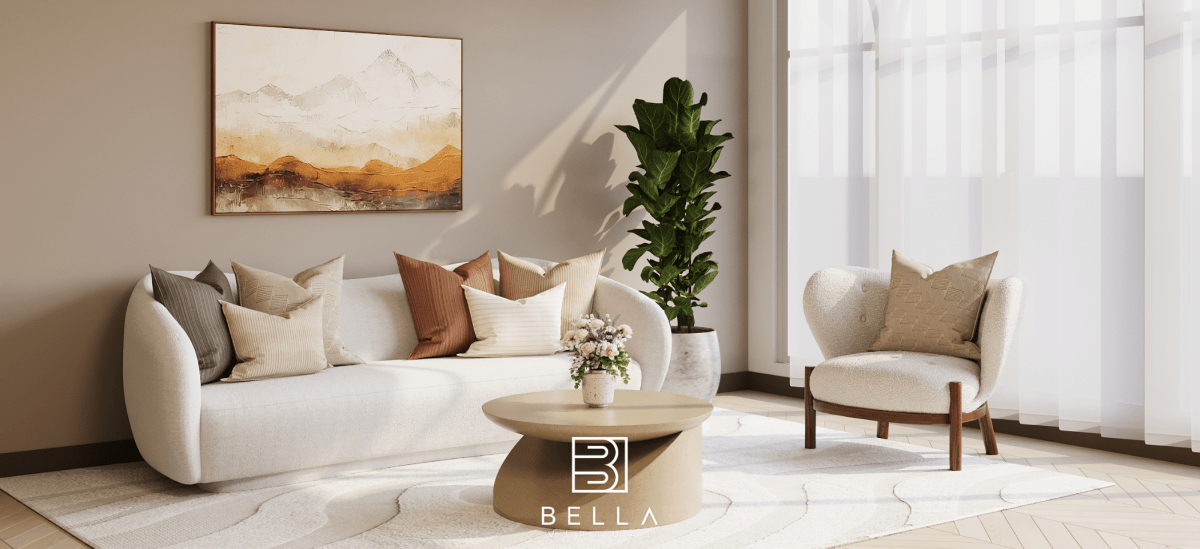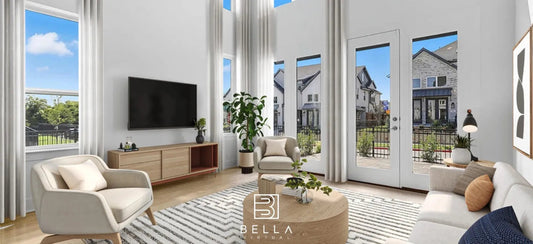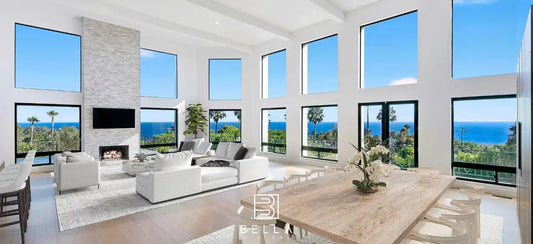Introduction
The real estate industry has undergone a remarkable transformation in recent years, with technology reshaping how properties are marketed, visualized, and sold. Among these advancements, 3D rendering has emerged as one of the most powerful tools for both interior design and property sales. Whether for showcasing an unbuilt development, helping buyers imagine a vacant space fully furnished, or delivering immersive virtual tours, 3D rendering is enabling real estate professionals to connect with buyers in ways that traditional photography simply cannot match. From measurable boosts in pre-sales to reduced time on market, the impact is clear — and the data from 2023–2025 underscores just how game-changing this technology has become.

Why 3D Rendering Is Transforming Real Estate Marketing
Photorealistic Visualization for Pre-Sales and Off-Plan Confidence
Selling a property that does not yet exist is one of the greatest challenges in real estate marketing. Buyers often struggle to visualize a space from architectural drawings alone, which can delay decisions and reduce confidence. Photorealistic 3D rendering solves this problem by providing crystal-clear imagery of what the completed project will look like, down to materials, lighting, and furniture placement.
According to the National Association of Realtors (2025), homes with 3D virtual tours or high-quality renderings can sell for up to 9% more. For developers, this means they can start marketing months — or even years — before construction is completed. Projects like City Gardens in Vermont used detailed CGI visuals to pre-sell apartment units, placing them on websites and in local media to drive interest before a single foundation was poured.
By showcasing lifelike interiors and exteriors, Residential 3D Rendering services remove uncertainty, helping buyers commit sooner and at higher price points. In competitive markets, this pre-sale confidence is a decisive advantage.
Faster Decisions: Engagement, Time-on-Market, and ROI
Beyond aesthetics, the numbers show that 3D rendering directly impacts speed to sale. Research from Bellastaging (2025) found that properties with Matterport-style 3D tours sell 20% faster than those without. Redfin’s 2024 data supports this, showing that virtual tours can accelerate sales cycles by 31% and increase listing views by 87% compared to static photography.
For real estate agents and developers, these aren’t just vanity metrics. Faster sales mean reduced holding costs, improved cash flow, and a stronger return on marketing spend. Additionally, 95% of buyers are more likely to call about a listing that includes a virtual tour, and 54% say they won’t even consider a property without one. In a digital-first buying journey, failing to offer immersive content can mean losing qualified leads before they even make contact.

3D Rendering for Interior Design Workflows
From Concept to Sign-Off: Iteration, Materiality, and Furniture Planning
For interior designers, 3D rendering streamlines the design process from initial concept to final approval. Instead of relying solely on mood boards or 2D sketches, designers can present clients with accurate, scale-specific visualizations showing everything from floor plans to texture details. This approach speeds up decision-making, reduces costly post-installation changes, and ensures alignment between all stakeholders.
Case in point: a Beverly Hills luxury home project used photorealistic renderings to secure client buy-in on high-value finishes and custom furniture before construction. This eliminated weeks of back-and-forth and minimized the risk of costly redesigns. When paired with Virtual Staging or Furniture Removal & Staging, designers can go even further by digitally furnishing vacant rooms for presentation and marketing purposes.
Virtual Tours vs. Static Photos: What the 2023–2025 Data Shows
Comparative studies from 2022–2025 leave little doubt: immersive experiences outperform traditional photography in attracting and converting buyers. Highlights include:
-
+87% listing views for virtual tours compared to static photos (Redfin, 2024)
-
+22% higher inquiry rates for listings with virtual tours (Redfin, 2024)
- Buyers spend 8–12 minutes exploring virtual tours versus 20–30 seconds on photo galleries
-
90% more likely to view a property if it includes a tour (PhotoUp, 2025)
- Emotional engagement increases by 23%, boosting purchase intent
These advantages are especially pronounced in luxury, international, and large-format properties where remote accessibility and spatial comprehension are key to buyer decision-making. With such compelling numbers, integrating high-quality 3D renderings and tours into marketing isn’t just an upgrade — it’s becoming a necessity.
YOU MAY ALSO LIKE:
- Make Your NYC Apartment Look Huge!
- Real-Life Examples and Case Studies on Virtual Staging
- Palm Beach County Homestead Exemption: What is it?

Choosing the Right Rendering Strategy for Your Listings
When to Use 3D Rendering vs. Virtual Staging (and How They Work Together)
While both 3D rendering and virtual staging deliver strong visual marketing assets, they serve different purposes.
-
3D Rendering is ideal for properties under construction, undergoing major renovation, or in early planning stages. It builds excitement before physical completion, especially for pre-sales.
-
Virtual Staging is better suited for existing properties that are vacant or partially furnished. It enhances real photos with stylish, digital décor to help buyers imagine the space’s potential.
The two can be combined strategically. For example, a developer could use Virtual Renovation & Staging for partially built units, pairing it with 3D exterior renderings to show the finished property inside and out. This layered approach maximizes visual impact and accommodates various buyer needs.

Implementation Checklist: Assets, Turnaround, and Compliance
Launching a rendering project successfully involves clear planning and communication:
-
Collect high-quality inputs — floor plans, CAD files, architectural drawings, and site photos.
-
Define style and scope — including materials, finishes, and furniture preferences.
-
Set realistic timelines — many services, including Bella Virtual, offer 24-hour turnaround for certain projects.
-
Review compliance — ensure renderings accurately reflect the property’s planned specifications to avoid misleading buyers.
-
Integrate across channels — from MLS listings to social media, email campaigns, and investor presentations.
The right preparation ensures a smooth workflow and avoids costly revisions later in the marketing process.
FAQ
-
What is 3D rendering in real estate?
It’s the process of creating photorealistic digital images or animations of a property, often before it’s built, for marketing and design purposes.
-
How does 3D rendering help sell properties faster?
By offering immersive, accurate visuals, it boosts buyer confidence and shortens the decision-making process, reducing time on market by up to 31%.
-
Is 3D rendering only for luxury properties?
No. While luxury markets see strong ROI, mid-range and even rental markets benefit from increased engagement and pre-sale opportunities.
-
Can 3D rendering replace in-person viewings?
Not entirely, but it significantly reduces unnecessary site visits, especially for remote or international buyers.
-
What’s the difference between 3D rendering and virtual staging?
Rendering is ideal for pre-construction or major renovations, while staging enhances real photography for vacant or partially furnished homes.
-
How much does 3D rendering cost?
Pricing varies by complexity, but it’s generally a fraction of the cost of physical staging and offers wider marketing reach.
-
What turnaround times are possible?
Some providers, like Bella Virtual, can deliver certain 3D rendering or staging projects within 24 hours.

Conclusion
3D rendering has shifted from a niche design tool to a mainstream necessity in real estate marketing. With proven benefits such as higher sales prices, faster closings, and stronger buyer engagement, it’s no longer just an aesthetic upgrade — it’s a competitive advantage.
Whether you’re an agent aiming to stand out in a crowded MLS, a developer marketing off-plan units, or an interior designer streamlining client approvals, photorealistic visualization delivers measurable results. By integrating Residential 3D Rendering, Virtual Staging, and Virtual Renovation & Staging into your strategy, you can connect with buyers sooner, sell faster, and maximize your marketing ROI.
Ready to captivate buyers before they step foot inside? Contact Us today to start transforming your property marketing.














